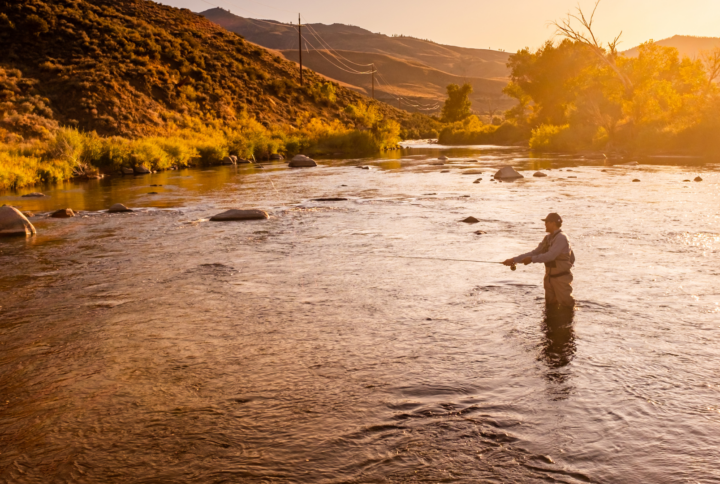Eagle River - Gypsum - Colorado
Fly Fishing River Report & Conditions
Eagle River – Gypsum - Water Flow Chart
Eagle River – Gypsum - Weather report & radar
Eagle River – Gypsum - General hatch chart
| Month | Hatch | Time of Day | Recommended Fly Sizes | Popular Fly Patterns |
|---|---|---|---|---|
| January | Midges | Afternoon | 18-22 | Zebra Midge, Black Beauty |
| February | Midges | Afternoon | 18-22 | Zebra Midge, Miracle Midge |
| March | Blue Wing Olives, Midges | Afternoon | 18-22 for Midges, 18-20 for BWO | RS2, Zebra Midge |
| April | Blue Wing Olives, Midges | Morning, Afternoon | 16-20 for BWO, 18-22 for Midges | Sparkle Dun, Zebra Midge |
| May | BWO, Caddis | Afternoon, Evening | 20-22 | Sparkle Dun, Goddard Caddis |
| June | Stoneflies, Caddis | Morning, Evening | 14-16 for Stoneflies, 16-18 for Caddis | Elk Hair Caddis, Golden Stonefly |
| July | Stoneflies, Caddis, PMD | All Day | 14-16 | Elk Hair Caddis, Yellow Sally, Pale Morning Dun |
| August | Tricos, Terrestrials | Morning, Afternoon | 18-22 for Tricos, 10-14 for Terrestrials | Trico Spinner, Hopper Patterns |
| September | Tricos, Terrestrials, BWO | Afternoon | 18-22 for Tricos, 12-16 for Terrestrials, 18-22 for BWO | Trico Spinner, Ant Patterns, Blue Wing Olive |
| October | BWO, Midges | Afternoon | 20-24 for BWO, 22-26 for Midges | Blue Wing Olive, Griffith’s Gnat |
| November | Midges | Afternoon | 22-26 | Zebra Midge |
| December | Midges | Afternoon | 22-26 | Black Beauty |
Eagle River – Gypsum Access Points
Colorado’s Eagle River is a renowned destination for fly fishing enthusiasts. There are several popular spots to gain access to this charming river in Gypsum.
- Gypsum Ponds State Wildlife Area: This offers a pleasant atmosphere and is beginner-friendly. It’s located just East of the gypsum exit.
- Two Rivers Park: It provides easy access for fly fishing as it connects to the Eagle River with a pedestrian bridge.
- Sylvan Lake Road: It’s perfect for catching brown trout. It has public access points at the road’s major bends.
- Public Access Point near the Eagle County Regional Airport: This spot is quite traditional and does not generally get crowded.
- Eagle River Park: A new addition, the park has improved river access and is ideal for whitewater and fishing enthusiasts.
Eagle River – Gypsum Fishing Spots
Based on the season and the type of fish you’re after, some spots on the Eagle River – Gypsum stand out as prime locations for fly fishing.
- Chambers Park: Easily accessible and abundant with Brown and Rainbow Trout, this park is perfect for beginners and veterans alike.
- Eby Creek: This spot is celebrated for its late summer Green Drake hatch which attracts plenty of big trout- a fly fisher’s paradise.
- Frost Creek: Frost Creek runs through a golf course where anglers can catch larger than average Rainbow Trout.
- The Toilet Bowl: Don’t let the name fool you, this spot is a hidden gem. Nestled below the Sylvan Lake outlet, this is a favorite for catching Brown Trout in the spring.
- Brush Creek Confluence: Where Brush Creek meets Eagle River, anglers often find large Rainbow and Brown Trout, especially in the early summer.
Eagle River – Gypsum Local Fish Species
- Trout
- Rainbow Trout: Noted for their strikingly vibrant colors.
- Brown Trout: Mature fish have a brown back and reddish belly.
- Brook Trout: Smallest of the trout species targeted on the Eagle River.
- Cutthroat Trout: Named for the bright red streak on their lower jaws.
- Mountain Whitefish: Not targeted for its sport but for its fight when hooked and delicious taste.
- Pike: A predatory fish that provides sport enthusiasts a great deal of excitement.
- Arctic Grayling: Known for their beautiful, rainbow colored dorsal fin.
- Salmon
- Kokanee Salmon: A landlocked salmon prized for its tackle-busting strength.
About the Eagle River – Gypsum
The Eagle River – Gypsum has a rich history that adds irreplaceable depth to its presence in the American West. Born in the Continental Divide, this river plays an essential part in the fascinating tale of Gypsum town and the development of the West.
- Gypsum’s prosperity first took off in the late 19th century, when the mining of, you guessed it, gypsum (a key ingredient in plaster) began.
- The establishment of the railroad in 1882 made transporting Gypsum’s vital resource to growing Western towns much more feasible, marking a significant economic boom.
- Anecdotal tales provide an evocative picture of the past, with depictions of the Eagle River’s banks filled with campfires of hopeful gold miners throughout the Gold Rush era.
Today, while mining has lessened, the Eagle River – Gypsum remains pivotal; supporting local communities, residents and visitors, with its essential water source and splendid recreational activities.
Community Contributions
Be part of the fishing community-
Submit your update!
Coming Soon



